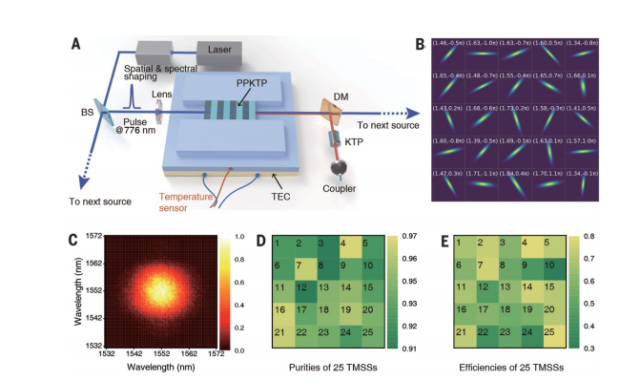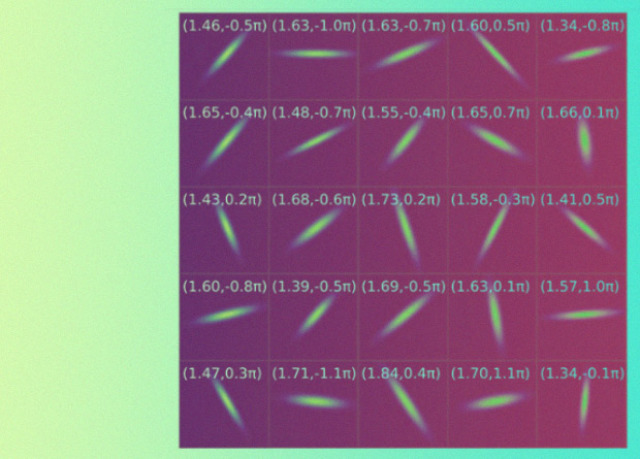Chinese physicists have assembled an optical circuit that demonstrates quantum superiority. They chose boson sampling on a 100-mode optical interferometer as a task to demonstrate the speed of a quantum device. According to the authors ' calculations, their quantum computer copes with this task 100 trillion times faster than a conventional supercomputer. The work is published in the journal Science.
Since the beginning of the development of quantum technologies, the question of the superiority of a quantum computer over a classical one not only remains open, but its formulation is constantly changing. Scientists have focused their attention on certain problems in which quantum computers are more efficient than classical ones. You can read more about quantum computers and the tasks they can solve faster in our article "How long to wait for quantum supremacy?"
Almost a year ago, Google's quantum artificial intelligence Department announced for the first time that their superconducting 53-qubit Sycamore processor could outperform a classic supercomputer in the task of generating random numeric strings. Due to the probabilistic nature of qubits, the number of possible variants of such strings is very large — 253, so for a classical computer, solving such a problem can take thousands of years. We wrote about this experiment in the material "Quantum superiority» .
In addition to the many tasks that can be used to demonstrate the capabilities of quantum computers, there are different platforms for creating the processors themselves. They all develop in parallel and each has its own advantages and disadvantages. Google specialists used superconducting circuits for implementation. In addition, physicists are developing quantum processors based on ultracold atoms, ions, and photons. Photon processors usually contain an interferometer, which is convenient for implementing the problem of boson sampling . In the standard case, photons that fall into the interferometer interact with each other, which allows you to get different output States with a certain probability. The frequency with which one or another output state is obtained characterizes the interferometer itself, or rather the transformation matrix over photons. Boson sampling allows you to calculate the permanents of matrices, which becomes difficult for classical computers when the dimension increases.
Researchers from the University of science and technology of China, led by Jian-Wei pan, put together an optical scheme to calculate the permanent matrix size of 100 by 100, which turned out to be too much for a classical computer. They used 25 nonlinear crystals to generate pairs of entangled photons, and an interferometer for boson sampling was assembled using bulk optics.

(a) a scheme for generating a pair of entangled photons using spontaneous parametric scattering, (b) the spectra of all compressed States, (c) the spectral distribution of a pair of generated photons, (d) the purity values of each of the 25 States, (e) the efficiency of each input state
Image source: Han-Sen Zhong et al. /Science, 2020
Photon processors are good because they work at room temperatures, but they lag behind other platforms in the speed of generating qubits. In the case of spontaneous parametric scattering, which the authors used to generate single photons, it is quite difficult to obtain a high rate of generation of photon pairs. Physicists were able to achieve high efficiency of single photon generation by selecting the parameters of 25 nonlinear crystals, as well as due to their temperature control and high-quality tuning of the optical scheme. In addition, the Gaussian nature of photons obtained by using spontaneous parametric down-conversion, influenced the type of input States, the researchers used a compressed state. In order to obtain an input state with a dimension of 100 out of 50 photons, two quantities were encoded in each photon — its position in space and its polarization.
To assess the indistinguishability of photons, which determines the degree of their interaction, and to test the interferometer, physicists started with simple experiments. A pair of compressed States were fed to different interferometer inputs and their distribution at the output was recorded. After that, the interferometer was launched in operating mode with 25 States at the input, and in 200 seconds, scientists were able to record different output States more than three million times.
The authors compared the statistics of the output States of the developed interferometer, which coincided with the theoretical lognormal distribution with high accuracy, with the results of random generation of numerical sequences. It turned out that both statistics are not identical and it will not be possible to reproduce the experiment data using random generation.
An important and intriguing part of the work — comparing the performance of a classical computer and a photonic quantum processor — was performed on two different supercomputers (TaihuLight and Fugaku). In both cases, the quantum computer coped with its task 1014 times faster.
Before creating a photon processor with 25 photons, Chinese scientists explored the possibilities of boson sampling on a smaller number of qubits: they created a 10-photon Schrodinger cat, built a boson sampler that surpassed the first classical computer, and accelerated the calculation of the boson sampler using lost photons.
Oksana Borzenkova

